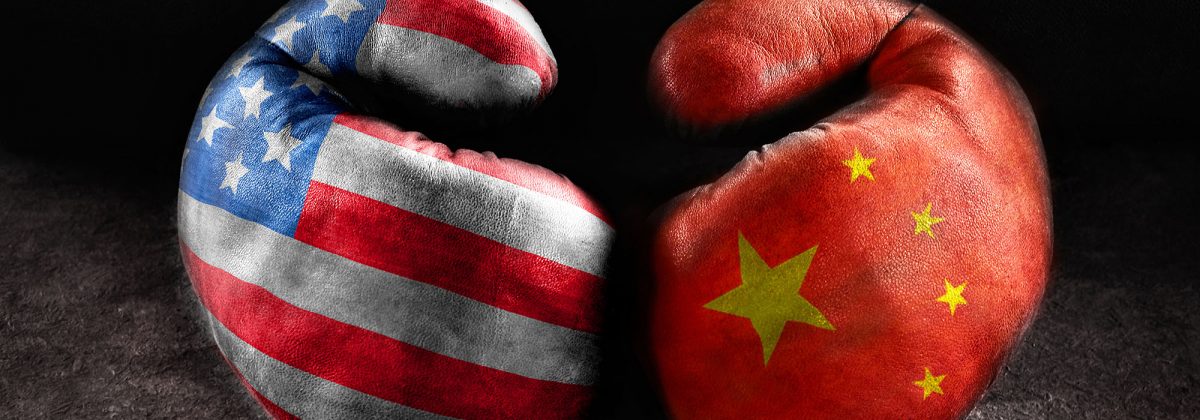China-US Trade War is in a Decisive Phase: What to Expect?

The United States of America and China have been involved in a trade war since July 2018. Both countries have fought ruthlessly to gain control over the global markets in a dispute that has been viewed more as a power struggle between two nations, than business. And, in all of this, it is the American and Chinese consumer who is suffering due to the tariffs imposed by the two giants.
Despite the US tariffs, China has continued to invest with two main aims in mind. The first is to move up in the supply chain and the second is to reduce its reliance on foreign R&D. If things don’t change, it is possible that the US tariff rate on Chinese imports worth US$250 billion will increase from the existing 10% to a whopping 25%. This will cause a ripple effect on the global markets and lead to further trouble for consumers, due to rising costs.
Trade representatives from both countries have held several talks in Beijing as well as Washington DC, giving hope that they might reach a mutual understanding. Unfortunately, a cloud of uncertainty still looms large on the future of the two dominant market players. So, what could be the possible outcomes of this war?
Outcome #1: Reaching a New Status Quo
It’s possible that trade will continue as usual. But business leaders of the two countries might decide to carefully analyse future risks. This can only happen if President Donald Trump and Chinese Premier Xi Jinping decide to end hostilities and agree to talks, while announcing such intent through their speeches. Both countries will then go back to their original stance and withdraw the various tariff hikes imposed since the start of the trade war.
Is this outcome possible?
The chances of a new status quo appear quite healthy in the short term, since the US stock market has not reacted positively to the uncertainties created by the trade war. Consumers and retailers will only continue to suffer if tariffs on Chinese imports remain as high as they are at present.
Meanwhile, in China, a slowdown in the manufacturing sector, decreasing domestic consumption, rising unemployment and financial sector reforms could act as catalysts to creating the right environment for talks with the US.
If a trade war ceasefire is agreed, there will still be a long-term impact on how Chinese and American firms engage in business with each other.
Signs to Look out For
Businesses or traders should pay close attention to any announcements about talks between officials from both sides. Any state level visits or commitments to talks at public forums can also be seen as a sign.
Apart from this, inclusion of experienced officials, such as Wang Qishan and Liu He from the Chinese side, and moderate voices, such as Robert E. Lighthizer, Larry Kudlow or Steve Mnuchin from the US, could light the way for a truce.
Outcome #2: A New Trade Deal
The two countries could negotiate on the concessions imposed on each other with the help of a clear, mutual dialogue.
The US and Chinese governments could make plans to put a new trade deal in place that would allow bilateral market access, secure intellectual property rights and create more equality for private sector companies in China, while increasing customs and regulatory transparency.
Both nations could also request for certain safeguards to be included in the deal to avoid any confrontations in the future.
The Possibility of a New Trade Deal
A new trade deal is possible between China and the US, although not in the short-term. It will take a lot of time for the deal to become a reality, possibly longer than the current US administration under President Trump.
If not a trade deal, President Trump could give priority to some type of compromise to help him regain the level of populist support he once had. The tariff war that started during his term hasn’t really achieved its objectives and President Trump would want to make efforts in that direction.
Regular meetings between trade officials, lobby groups and consultations with elite officials from both countries can be seen as an indication of a new deal. So, the most important thing to assess is whether China and the US are talking to each other in a constructive manner.
Outcome #3: An All-Out Trade War
There seem to be very low chances that an intense trade war would begin, given the huge costs it would entail for both countries. Businesses will most likely put pressure on the governments to show restraint so that no damaging steps are taken.
China and the United States are the largest economies of the world and form an integral part of the world’s industrial supply chain. So, a prolonged trade war would be catastrophic for the world economy and might lead to recession.
The US-China trade war has affected international trade relations and has caused systemic risk to businesses. Companies that are overly-dependent on China for manufacturing and sourcing are already bearing the brunt of rising costs, market restrictions, strict regulations, fluctuating tariffs and falling profits.
Businesses that ignore such risks or do not design contingency plans in advance, risk their financial security and long-term stability.
The trade war escalated quickly through the latter part of 2018 and into 2019, posing a major challenge for businesses. This has led to companies widening their horizons in search of suppliers and service providers.
The Current Situation
The trade war has had its effect on US trade, with the nation’s trade deficit widening in 2018, to reach a 10-year high of $621 billion. US exports also declined towards the end of 2018, while imports rose. The worst part is that all this trade tension has started affecting business sentiment, with indications that companies are beginning to pull back on capital spending.
When it comes to the domestic currencies of the two nations, the US dollar has risen 2% since the tariffs were imposed on Chinese goods in July 2018, while the yuan has dropped 1% during the same period. The yuan saw a huge 5% decline from July to October 2018.
In addition, the trade war has lowered the annual growth rate of the US economy by 0.1 to 0.2 percentage points, says Bloomberg. And, China has seen a decline in export orders to the lowest level in the past 10 years. The signs of a downturn in the second largest economy in the world seems imminent. In fact, even the Euro Zone has seen a decline in manufacturing activity to a degree that indicates contraction.
Reference Links
- https://www.scmp.com/comment/insight-opinion/united-states/article/2183634/expect-us-china-trade-war-come-showy-end-tech
- https://www.bbc.com/news/business-47848861
- https://www.china-briefing.com/news/how-will-us-china-trade-war-end-3-scenarios/
- https://www.forbes.com/sites/kenrapoza/2019/01/18/trade-war-update-is-the-door-closing-on-future-china-tariffs/#872cd955d329




